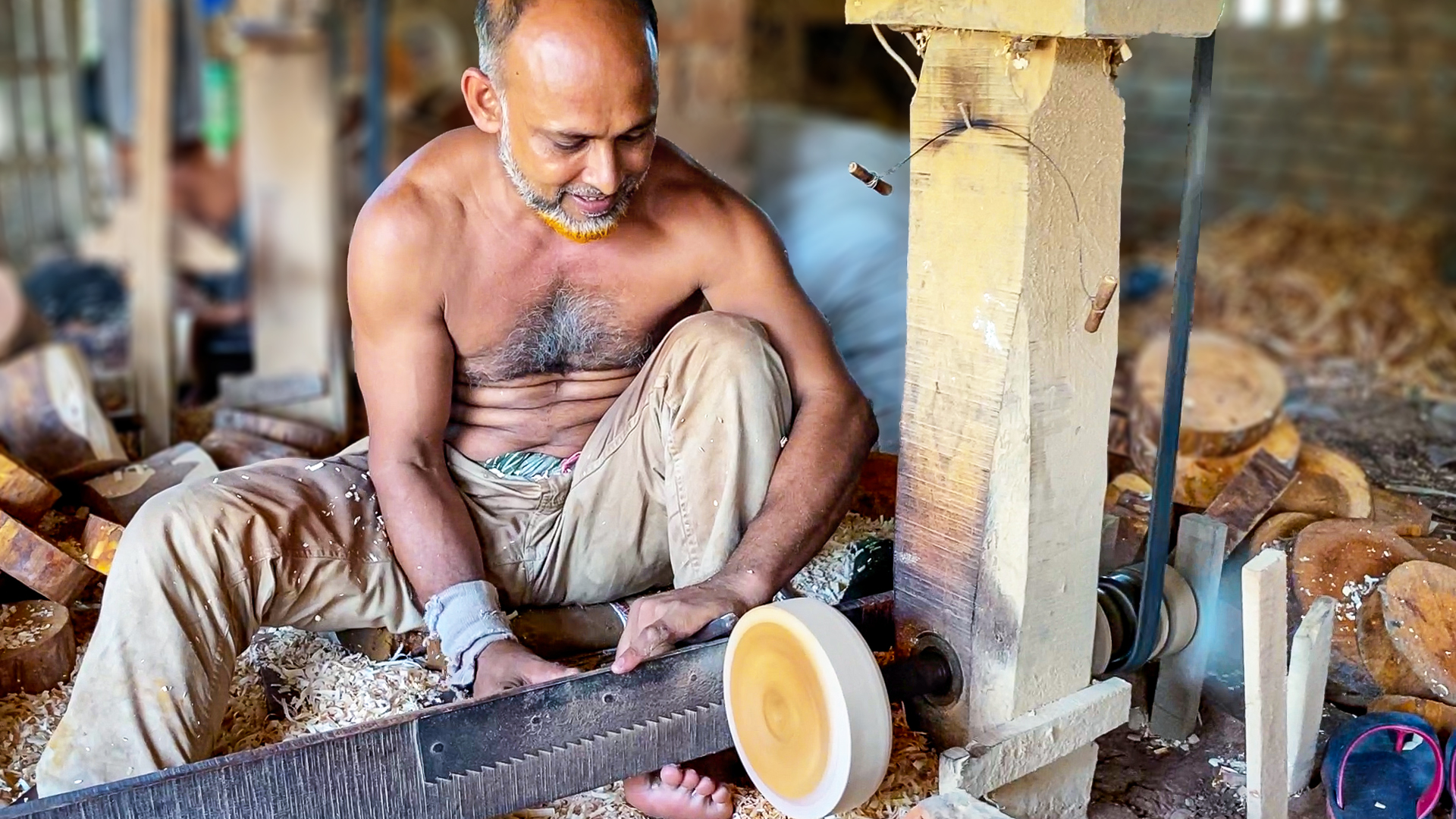Wood crafting has been an age-old tradition, sustaining countless artisans across the world. In many rural communities, skilled workers rely on their craftsmanship to create everyday wooden utensils, decorative items, and essential tools. The image above captures one such craftsman deeply engaged in his work, using simple yet effective traditional techniques to shape wood into useful products.
The Process of Wood Crafting
The journey of transforming raw timber into a finished wooden product begins with selecting the right type of wood. Many artisans prefer using reclaimed timber to ensure sustainability and affordability. The process typically includes:
1. Cutting the Wood – Large logs are sliced into smaller pieces to make them manageable.
2. Shaping & Turning – Using a manually operated lathe or rudimentary machines, the wood is shaped into desired forms. The craftsman in the image is using a lathe tool to shape a wooden disc, possibly for a plate or a decorative piece.
3. Sanding & Finishing – Once the desired shape is achieved, artisans smoothen the surface using sandpaper to give it a fine texture.
4. Polishing & Coating – Some pieces receive a natural polish, while others are coated with varnish or paint to enhance durability and appearance.
A Life of Hard Work & Minimal Earnings
Despite the artistic skills and effort involved, many of these craftsmen earn as little as $0.10 to $0.20 per piece. Given the low selling price and the sheer labor required, sustaining this craft is a daily challenge. These artisans work tirelessly, often spending long hours in poorly ventilated workshops, ensuring their families can have a decent livelihood.
Health Challenges of Woodworkers
The nature of this work poses several health risks, particularly due to continuous exposure to wood dust. Some common health issues include:
• Respiratory Problems – Prolonged inhalation of fine wood particles can lead to breathing difficulties, lung infections, or even chronic respiratory diseases.
• Skin Irritations – Some wood types release fine dust that can cause skin rashes and irritation.
• Muscle Strain & Fatigue – Sitting in awkward postures for long hours, along with manual labor, results in chronic pain in the back, arms, and shoulders.
Preserving This Traditional Craft
Despite these hardships, woodworkers take immense pride in their work. Their craft is not only a means of earning but also an art form that has been passed down through generations. Supporting these artisans by purchasing their handmade products, advocating for better working conditions, and spreading awareness about their struggles can help sustain this valuable trade
Wood crafting is more than just shaping timber; it’s a testament to resilience, dedication, and the beauty of handmade artistry. Let’s appreciate and support these hardworking artisans who turn raw wood into timeless pieces of craftsmanship.

